Mamady Delamou
Joint Adaptive OFDM and Reinforcement Learning Design for Autonomous Vehicles: Leveraging Age of Updates
Dec 24, 2024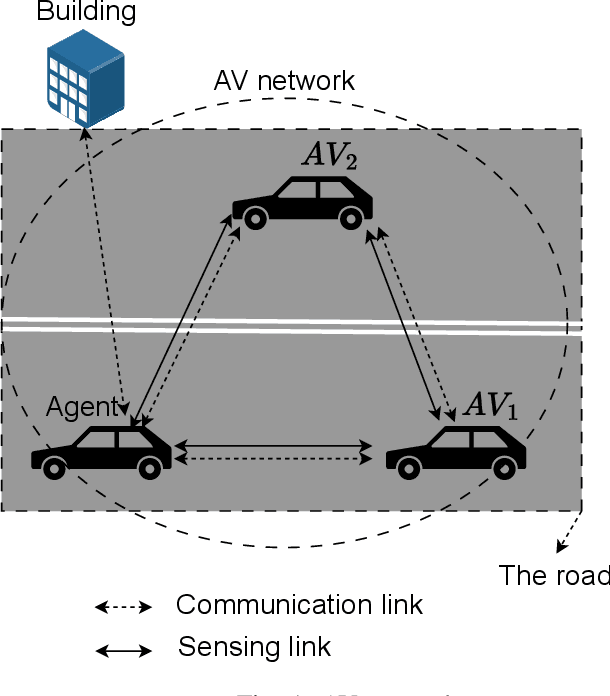
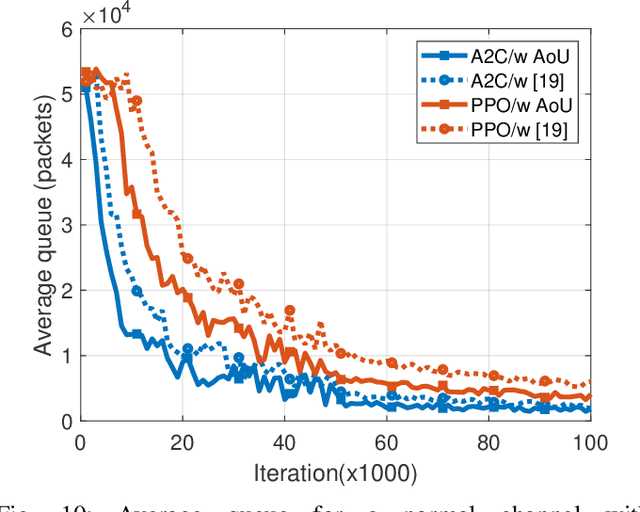
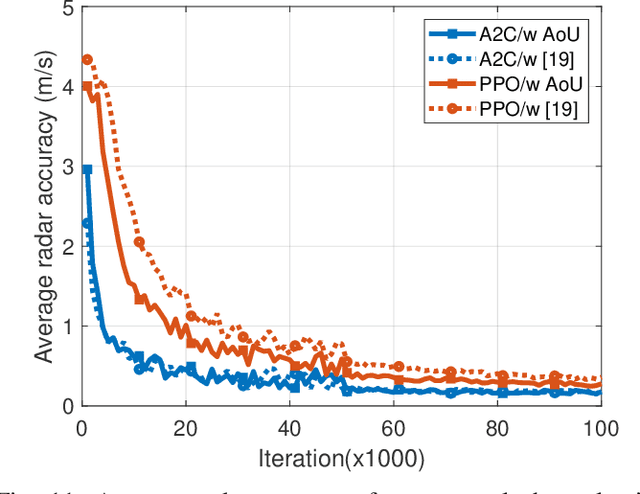
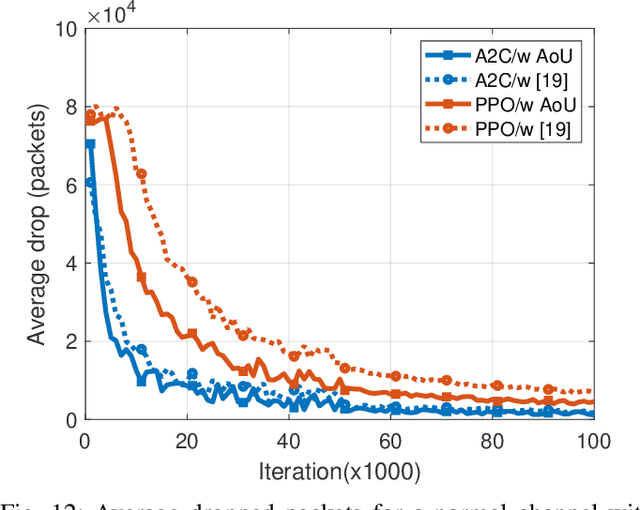
Abstract:Millimeter wave (mmWave)-based orthogonal frequency-division multiplexing (OFDM) stands out as a suitable alternative for high-resolution sensing and high-speed data transmission. To meet communication and sensing requirements, many works propose a static configuration where the wave's hyperparameters such as the number of symbols in a frame and the number of frames in a communication slot are already predefined. However, two facts oblige us to redefine the problem, (1) the environment is often dynamic and uncertain, and (2) mmWave is severely impacted by wireless environments. A striking example where this challenge is very prominent is autonomous vehicle (AV). Such a system leverages integrated sensing and communication (ISAC) using mmWave to manage data transmission and the dynamism of the environment. In this work, we consider an autonomous vehicle network where an AV utilizes its queue state information (QSI) and channel state information (CSI) in conjunction with reinforcement learning techniques to manage communication and sensing. This enables the AV to achieve two primary objectives: establishing a stable communication link with other AVs and accurately estimating the velocities of surrounding objects with high resolution. The communication performance is therefore evaluated based on the queue state, the effective data rate, and the discarded packets rate. In contrast, the effectiveness of the sensing is assessed using the velocity resolution. In addition, we exploit adaptive OFDM techniques for dynamic modulation, and we suggest a reward function that leverages the age of updates to handle the communication buffer and improve sensing. The system is validated using advantage actor-critic (A2C) and proximal policy optimization (PPO). Furthermore, we compare our solution with the existing design and demonstrate its superior performance by computer simulations.
Enhanced Intrusion Detection System for Multiclass Classification in UAV Networks
Jun 14, 2024Abstract:Unmanned Aerial Vehicles (UAVs) have become increasingly popular in various applications, especially with the emergence of 6G systems and networks. However, their widespread adoption has also led to concerns regarding security vulnerabilities, making the development of reliable intrusion detection systems (IDS) essential for ensuring UAVs safety and mission success. This paper presents a new IDS for UAV networks. A binary-tuple representation was used for encoding class labels, along with a deep learning-based approach employed for classification. The proposed system enhances the intrusion detection by capturing complex class relationships and temporal network patterns. Moreover, a cross-correlation study between common features of different UAVs was conducted to discard correlated features that might mislead the classification of the proposed IDS. The full study was carried out using the UAV-IDS-2020 dataset, and we assessed the performance of the proposed IDS using different evaluation metrics. The experimental results highlighted the effectiveness of the proposed multiclass classifier model with an accuracy of 95%.
Interference Reduction Design for Improved Multitarget Detection in ISAC Systems
Apr 08, 2024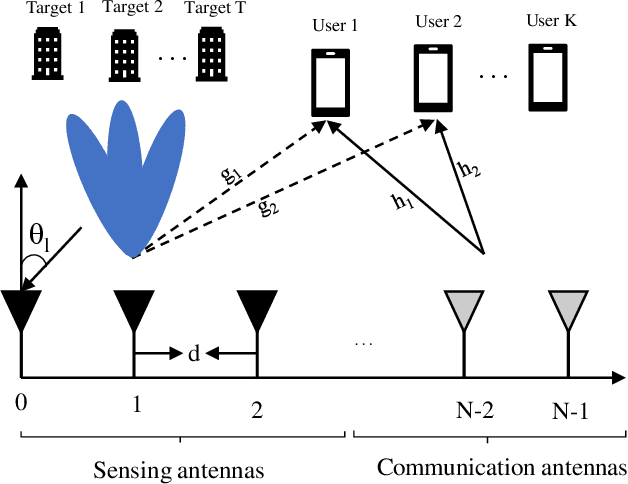

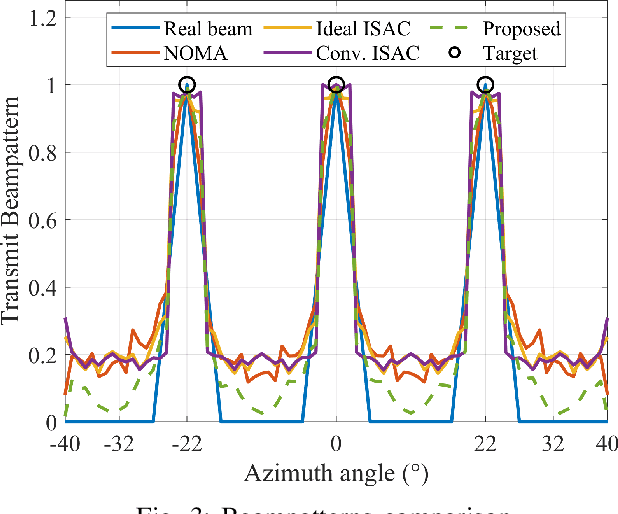

Abstract:The advancement of wireless communication systems toward 5G and beyond is spurred by the demand for high data rates, exceedingly dependable low-latency communication, and extensive connectivity that aligns with sensing requisites such as advanced high-resolution sensing and target detection. Consequently, embedding sensing into communication has gained considerable attention. In this work, we propose an alternative approach for optimizing integrated sensing and communication (ISAC) waveform for target detection by concurrently maximizing the power of the communication signal at an intended user and minimizing the multi-user and sensing interference. We formulate the problem as a non-disciplined convex programming (NDCP) optimization and we use a distribution-based approach for interference cancellation. Precisely, we establish the distribution of the communication signal and the multi-user communication interference received by the intended user, and thereafter, we establish that the sensing interference can be distributed as a centralized Chi-squared if the sensing covariance matrix is idempotent. We design such a matrix based on the symmetrical idempotent property. Additionally, we propose a disciplined convex programming (DCP) form of the problem, and using successive convex approximation (SCA), we show that the solutions can reach a stable waveform for efficient target detection. Furthermore, we compare the proposed waveform with state of the art radar-communication waveform designs and demonstrate its superior performance by computer simulations.
Deep Learning-based Estimation for Multitarget Radar Detection
May 05, 2023Abstract:Target detection and recognition is a very challenging task in a wireless environment where a multitude of objects are located, whether to effectively determine their positions or to identify them and predict their moves. In this work, we propose a new method based on a convolutional neural network (CNN) to estimate the range and velocity of moving targets directly from the range-Doppler map of the detected signals. We compare the obtained results to the two dimensional (2D) periodogram, and to the similar state of the art methods, 2DResFreq and VGG-19 network and show that the estimation process performed with our model provides better estimation accuracy of range and velocity index in different signal to noise ratio (SNR) regimes along with a reduced prediction time. Afterwards, we assess the performance of our proposed algorithm using the peak signal to noise ratio (PSNR) which is a relevant metric to analyse the quality of an output image obtained from compression or noise reduction. Compared to the 2D-periodogram, 2DResFreq and VGG-19, we gain 33 dB, 21 dB and 10 dB, respectively, in terms of PSNR when SNR = 30 dB.
An Efficient Radar Receiver for OFDM-based Joint Radar and Communication Systems
Sep 08, 2022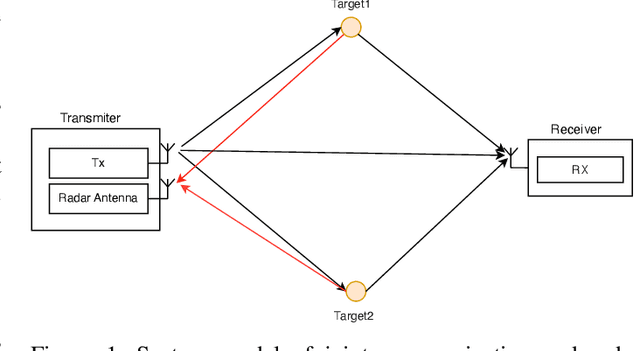
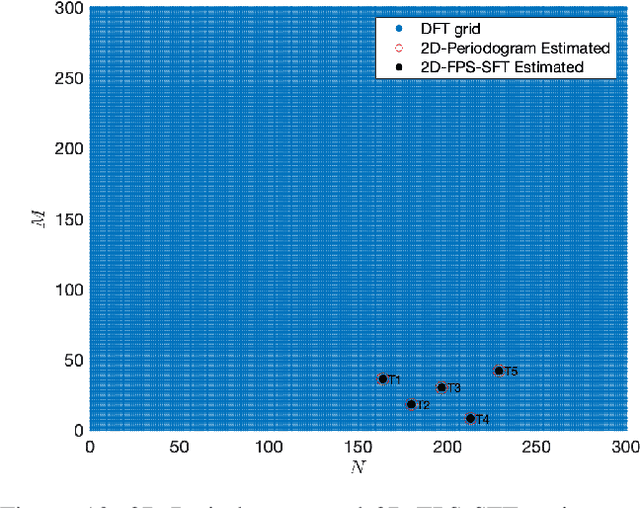
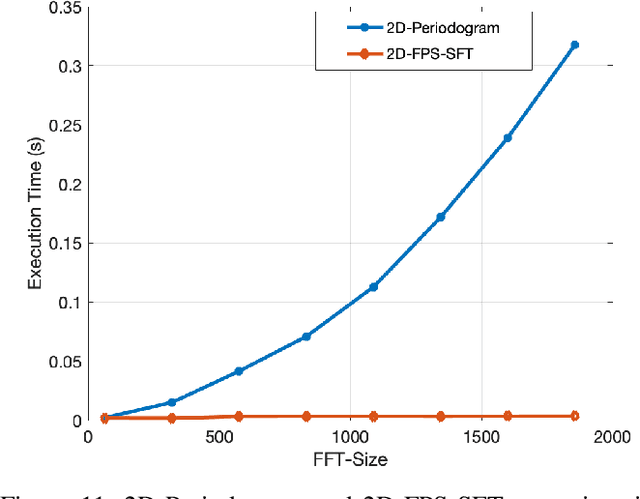
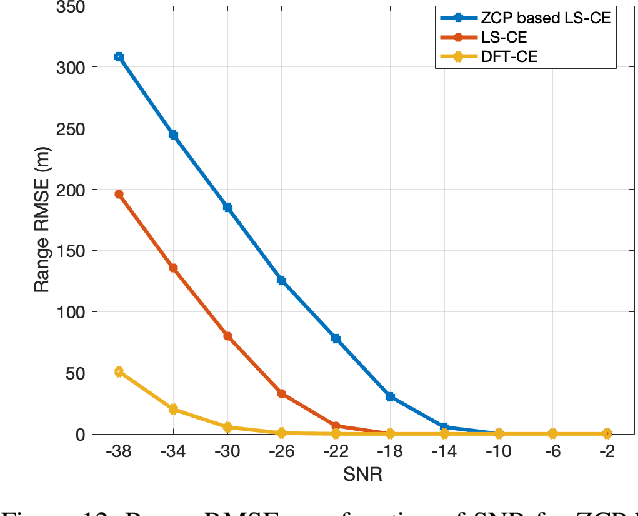
Abstract:We propose in this work a radar detection system for orthogonal-frequency division multiplexing (OFDM) transmission. We assume that the transmitting antenna Tx is colocated with a monostatic radar. The latter knows the transmitted signal and listens to echoes coming from the reflection of fixed or moving targets. We estimate the targets parameters (range and velocity) using a 2D-Periodogram. Moreover, we improve the estimation performance in low signal to noise ratio (SNR) conditions using the discrete Fourier transform channel estimation (DFT-CE) and we show that Zadoff-Chu precoding (ZCP) adopted for communication, does not degrade the radar estimation in good SNR conditions. Furthermore, since the dimensions of the data matrix can be much larger than the number of targets to be detected, we propose a sparse Fourier transform based Fourier projection-slice (FPS-SFT) algorithm to reduce the computational complexity of the 2D-Periodogram. An appropriate system parameterization in the 77GHz industrial, scientific and medical (ISM) band, allows to achieve a range resolution of 30.52 cm and a velocity resolution of 0.67 m/s and to reduce the periodogram computation time up to around 98.84%.
 Add to Chrome
Add to Chrome Add to Firefox
Add to Firefox Add to Edge
Add to Edge